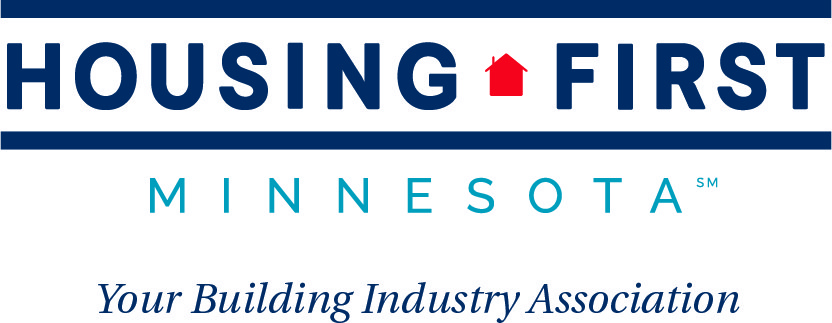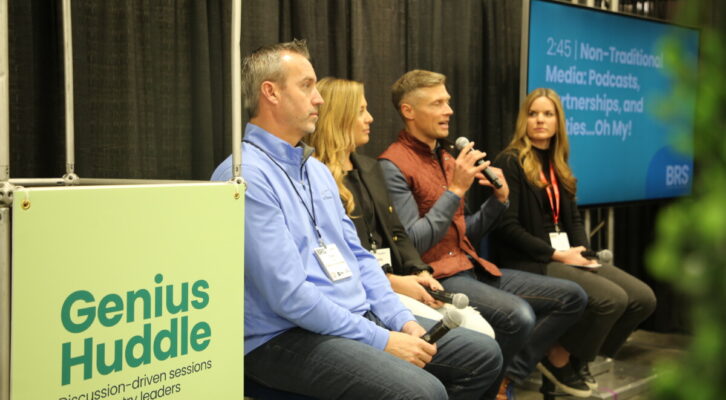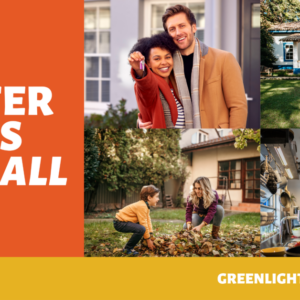In an era where marketing extends far beyond traditional tactics, builders and business owners are tapping into innovative ways to connect with their audiences. At this year’s Builders & Remodelers Show (BRS), we hosted a panel on non-traditional media featuring Mark Williams of Mark D. Williams Custom Homes, Danielle Yegge of Style & Structure, and Todd Polifka of Custom One Homes. These industry pros shared how they’ve leveraged podcasts, strategic partnerships, and activation events to build their brands in fresh and engaging ways.
Finding Your Niche in a Crowded Market
The panel kicked off with a discussion on how non-traditional marketing fits into an overall brand strategy. With homebuilding firms vying for attention, differentiation is key.
While tried-and-true marketing methods still have their place, today’s competitive landscape demands a more creative approach. Yegge emphasized the importance of differentiation, noting, “You really have to find your niche and speak to your audience.” When Style & Structure first launched its social media strategy, the team faced skepticism, but their persistence paid off, solidifying their brand’s presence as a powerhouse team on social.
Polifka emphasized the importance of adapting. “Marketing overall has changed so much in the last 5–10 years,” he shared, “It’s not just buying a print ad, a TV ad, or a magazine placement at the dentist’s office.” Polifka places a large focus on activation—turning marketing efforts into direct engagement with potential clients.
Williams aims to entertain and be personable. “People resonate with stories and with people,” he shares, “Leverage your storytelling in every format,” he advised, adding that the key to standing out is finding ways to break through the noise in an industry where everyone is talking to the same audience.
The Power of Podcasts
Podcasts have emerged as an accessible and impactful way to share expertise and build relationships. Polifka launched the Roof to Curb podcast to educate consumers about the complexities of home building, offering a behind-the-scenes look at the industry.
For those interested in podcasting, he broke it down simply: “You can start a podcast for under $1,000—it’s pretty easy. But understand the why—are you doing it for content, for entertainment, to monetize?”
For Yegge, the key to a successful podcast is meticulous preparation. “Prep work is key. We make things look effortless, but everything is thought through in detail.” Every episode of If Walls Could Talk is thoughtfully planned, from the season’s overarching goals to guest selection. She emphasized that storytelling in this format helps potential clients get to know the people behind the brand, strengthening trust before a single meeting takes place. She also encouraged business owners not to go it alone, noting that marketing collaborations, guest features, and outsourcing tasks like editing can make podcasting more manageable.
Williams, who uses his Curious Builder podcast to connect with industry peers and discuss entrepreneurship, believes that podcasts have surged in popularity because they’re one of the best ways to tell a story. For those hesitant to commit, he suggested starting out by networking with existing shows. “Go on as a guest—that’s a great way to dip your toe in and see if you like it,” he recommended, “Put together a little press kit and a bio, and reach out to hosts.”
Activations: Creating Unforgettable Brand Experiences
Brand activations—whether experiential marketing, events, or interactive campaigns—offer an unmatched opportunity to make a lasting impression.
Williams highlighted the importance of making an emotional impact with live events, “People may forget what you say, but they’ll never forget how you made them feel,” he said.
Polifka agreed, stressing that data collection is just as important as the event itself. “Events are great, but if you’re not capturing data about who’s there and why they’re there, then you’re just having a great party,” he said. He encouraged businesses to be strategic about how they extract and utilize client data to fuel future marketing efforts, emphasizing that activations should create a cycle that continuously draws potential clients back.
For Yegge, the Parade of Homes and Artisan Home Tour are the ultimate activations, generating the most qualified leads for her business. “You have one month to maximize efforts and generate leads,” she explained, highlighting how her team is intentional about every visitor’s experience. Each home is staffed with a team that actively engages attendees, geotracking is used to retarget visitors with ads, and every guest leaves with a small branded touchpoint—like a cookie. She reinforced that marketing doesn’t end when the event does. “What you do with a lead is important,” she stated, “The follow-up and sales process is just as important, if not more, than your marketing.”
Final Takeaways: Be Authentic, Take Risks, and Learn Fast
When it comes to embracing non-traditional media, all three panelists agreed that the key is to stay agile and authentic. Williams encouraged experimentation, stating, “If you’re going to fail—fail fast. Find out really quickly if it’s a good tactic or not.”
Yegge reminded marketers to focus on authenticity, asking, “Would you listen to your own podcast?” Some of her most viral content moments have been imperfect and spontaneous, proving that audiences value realness over perfection.
Polifka summed it simply: “Either be memorable or be educational.”
As the marketing landscape continues to evolve, builders and business owners who embrace creative storytelling, strategic partnerships, and immersive brand experiences will be the ones who stand out—and ultimately, win over their audience.
So, what’s your next non-traditional move?

















